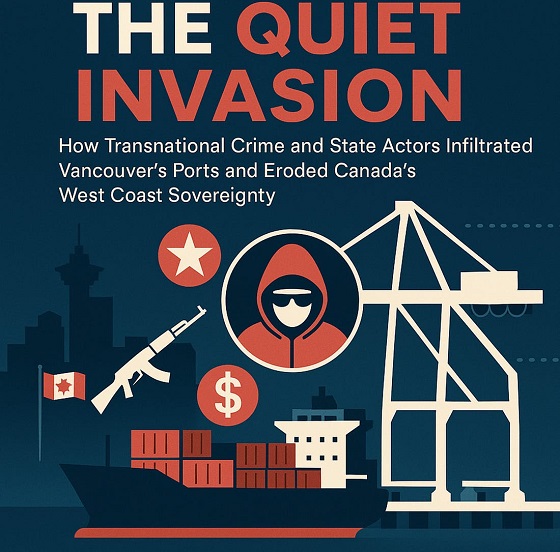Energy
Trump’s tariffs made Ottawa suddenly start talking about new east-to-west pipelines, but how long will it last?
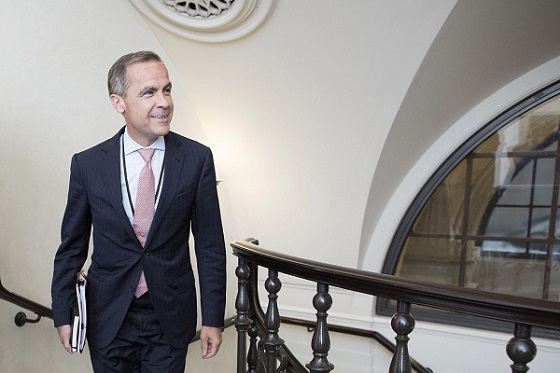
For years, oil pipelines have been a political fault line in Canada, with battles over environmental policies, economic development and national energy security. The Liberal government under Prime Minister Justin Trudeau, has sent mixed signals – championing climate goals while approving some energy projects like the Trans Mountain Expansion. But now, with a trade war looming over Canada, a surprising shift has occurred: a consensus across the political spectrum in favour of building new pipelines.
And it’s all due to one man: United States President Donald Trump.
Trump’s threat to impose a 10 percent tariff on Canadian energy and 25 percent on other Canadian exports has woken up Ottawa. Previously, Trudeau’s government made decisions that killed off big pipeline projects like Energy East. Bill C-69 was blamed for creating an uncertain regulatory environment that discouraged investment in pipelines.
But now, Liberal ministers are talking about revisiting those projects.
On February 6, Energy Minister Jonathan Wilkinson, a long-time climate crusader, surprised many when he said Canada is too dependent on the U.S. as an oil buyer and suggested Ottawa should consider a pipeline to Eastern Canada to diversify energy exports. He’d made similar comments in September and October 2024 when he said oil demand had peaked and pipelines were unnecessary.
The next day, it was reported that Industry Minister François-Philippe Champagne followed Wilkinson’s lead, saying Canada must reassess its energy infrastructure given Trump’s threat. He even suggested Quebec, which has long opposed pipelines, might be open to reconsidering Energy East.
Shortly after, Alberta Premier Danielle Smith seized the moment, urging Ottawa to restart talks on national energy infrastructure.
And then on February 9, Champagne again said Quebecers might have a different view on pipelines now that their economic security is at stake.
This is a stunning reversal. Just months ago Wilkinson and other Liberal officials were saying oil demand was declining and Canada should focus on renewables and electrification.
However, is this a real policy shift?
While some senior Liberals are suddenly in favour of pipelines, one key figure has been silent: Mark Carney, the front runner in the Liberal leadership race.
Carney has made climate action a central plank of his campaign, but says he supports the “concept” of an east-west pipeline.
His silence raises a big question: Are the Liberals really in favour of oil pipelines or is this just a reaction to Trump?
Despite Carney, Wilkinson and Champagne’s comments, big industry players remain skeptical. Pipeline projects take years of regulatory approval, billions of investment and political will at both the federal and provincial level. The Trudeau government’s track record has been one of obstacles, not encouragement, for big energy projects.
And some experts say pipeline companies may not be keen to jump back into the fray. TC Energy, the former proponent of Energy East, divested its oil pipeline business in 2023. Would a new pipeline proponent be willing to navigate the regulatory and political minefield that Ottawa itself created?
The political fallout could be immense.
If the Liberals go for pipelines, it will be one of the biggest policy reversals in Canadian energy history. It will also expose deep divisions within the party. Environmental groups and Liberal voters in urban centres will likely rage against such a shift while oil-producing provinces like Alberta and Saskatchewan will remain skeptical of Ottawa’s new enthusiasm.
Meanwhile the Conservative Party, the only federal party that has always been in favour of pipelines, will find itself in an unusual position—watching the Liberals adopt its policies as their own.
In the next few weeks all eyes will be on Carney and the Liberal leadership race. If Carney keeps hedging on pipelines, it will be unclear if this new consensus is real or just political expediency in the face of Trump’s tariffs.
For now Canada’s pipeline debate is no longer about energy or the environment—it’s about sovereignty, trade and survival in an uncertain global economy. Will this consensus last beyond the immediate crisis?
Energy
China undermining American energy independence, report says
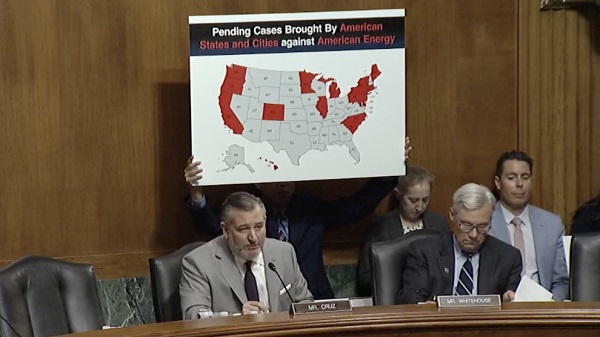
From The Center Square
By
The Chinese Communist Party is exploiting the left’s green energy movement to hurt American energy independence, according to a new report from State Armor.
Michael Lucci, founder and CEO of State Armor, says the report shows how Energy Foundation China funds green energy initiatives that make America more reliant on China, especially on technology with known vulnerabilities.
“Our report exposes how Energy Foundation China functions not as an independent nonprofit, but as a vehicle advancing the strategic interests of the Chinese Communist Party by funding U.S. green energy initiatives to shift American supply chains toward Beijing and undermine our energy security,” Lucci said in a statement before the Senate Judiciary Subcommittee’s hearing on Wednesday titled “Enter the Dragon – China and the Left’s Lawfare Against American Energy Dominance.”
Lucci said the group’s operations represent a textbook example of Chinese influence in America.
“This is a very good example of how the Chinese Communist Party operates influence operations within the United States. I would actually describe it as a perfect case study from their perspective,” he told The Center Square in a phone interview. “They’re using American money to leverage American policy changes that make the American energy grid dependent upon China.”
Lucci said one of the most concerning findings is that China-backed technology entering the U.S. power grid includes components with “undisclosed back doors” – posing a direct threat to the power grid.
“These are not actually green tech technologies. They’re red technologies,” he said. “We are finding – and this is open-source news reporting – they have undisclosed back doors in them. They’re described in a Reuters article as rogue communication devices… another way to describe that is kill switches.”
Lucci said China exploits American political divisions on energy policy to insert these technologies under the guise of environmental progress.
“Yes, and it’s very crafty,” he said. “We are not addressing the fact that these green technologies are red. Technologies controlled by the Communist Party of China should be out of the question.”
Although Lucci sees a future for carbon-free energy sources in the United States – particularly nuclear and solar energy – he doesn’t think the country should use technology from a foreign adversary to do it.
“It cannot be Chinese solar inverters that are reported in Reuters six weeks ago as having undisclosed back doors,” he said. “It cannot be Chinese batteries going into the grid … that allow them to sabotage our grid.”
Lucci said energy is a national security issue, and the United States is in a far better position to achieve energy independence than China.
“We are luckily endowed with energy independence if we choose to have it. China is not endowed with that luxury,” he said. “They’re poor in natural resources. We’re very well endowed – one of the best – with natural resources for energy production.”
He said that’s why China continues to build coal plants – and some of that coal comes from Australia – while pushing the United States to use solar energy.
“It’s very foolish of us to just make ourselves dependent on their technologies that we don’t need, and which are coming with embedded back doors that give them actual control over our energy grid,” he said.
Lucci says lawmakers at both the state and federal levels need to respond to this threat quickly.
“The executive branch should look at whether Energy Foundation China is operating as an unregistered foreign agent,” he said. “State attorneys general should be looking at these back doors that are going into our power grid – undisclosed back doors. That’s consumer fraud. That’s a deceptive trade practice.”
Energy
Carney’s Bill C-5 will likely make things worse—not better
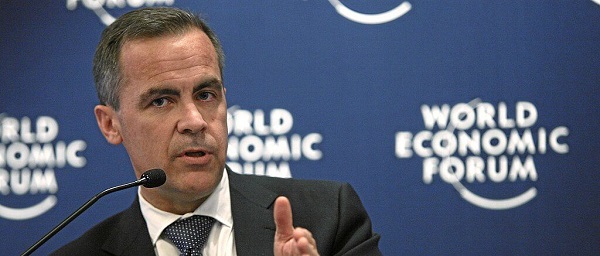
From the Fraser Institute
By Niels Veldhuis and Jason Clemens
The Carney government’s signature legislation in its first post-election session of Parliament—Bill C-5, known as the Building Canada Act—recently passed the Senate for final approval, and is now law. It gives the government unprecedented powers and will likely make Canada even less attractive to investment than it is now, making a bad situation even worse.
Over the past 10 years, Canada has increasingly become known as a country that is un-investable, where it’s nearly impossible to get large and important projects, from pipelines to mines, approved. Even simple single-site redevelopment projects can take a decade to receive rezoning approval. It’s one of the primary reasons why Canada has experienced a mass exodus of investment capital, some $387 billion from 2015 to 2023. And from 2014 to 2023, the latest year of comparable data, investment per worker (excluding residential construction and adjusted for inflation) dropped by 19.3 per cent, from $20,310 to $16,386 (in 2017 dollars).
In theory, Bill C-5 will help speed up the approval process for projects deemed to be in the “national interest.” But the cabinet (and in practical terms, the prime minister) will determine the “national interest,” not the private sector. The bill also allows the cabinet to override existing laws, regulations and guidelines to facilitate investment and the building of projects such as pipelines, mines and power transmission lines. At a time when Canada is known for not being able to get large projects done, many are applauding this new approach, and indeed the bill passed with the support of the Opposition Conservatives.
But basically, it will allow the cabinet to go around nearly every existing hurdle impeding or preventing large project developments, and the list of hurdles is extensive: Bill C-69 (which governs the approval process for large infrastructure projects including pipelines), Bill C-48 (which effectively bans oil tankers off the west coast), the federal cap on greenhouse gas emissions for only the oil and gas sector (which effectively means a cap or even reductions in production), a quasi carbon tax on fuel (called the Clean Fuels Standard), and so on.
Bill C-5 will not change any of these problematic laws and regulations. It simply will allow the cabinet to choose when and where they’re applied. This is cronyism at its worst and opens up the Carney government to significant risks of favouritism and even corruption.
Consider firms interested in pursuing large projects. If the bill becomes the law of the land, there won’t be a new, better and more transparent process to follow that improves the general economic environment for all entrepreneurs and businesses. Instead, there will be a cabinet (i.e. politicians) with new extraordinary powers that firms can lobby to convince that their project is in the “national interest.”
Indeed, according to some reports, some senators are referring to Bill C-5 as the “trust me” law, meaning that because there aren’t enough details and guardrails within the legislation, senators who vote in favour are effectively “trusting” Prime Minister Carney and his cabinet to do the right thing, effectively and consistently over time.
Consider the ambiguity in the legislation and how it empowers discretionary decisions by the cabinet. According to the legislation, cabinet “may consider any factor” it “considers relevant, including the extent to which the project can… strengthen Canada’s autonomy, resilience and security” or “provide economic benefits to Canada” or “advance the interests of Indigenous peoples” or “contribute to clean growth and to meeting Canada’s objectives with respect to climate change.”
With this type of “criteria,” nearly anything cabinet or the prime minister can dream up could be deemed in the “national interest” and therefore provide the prime minister with unprecedented and near unilateral powers.
In the preamble to the legislation, the government said it wants an accelerated approval process, which “enhances regulatory certainty and investor confidence.” In all likelihood, Bill C-5 will do the opposite. It will put more power in the hands of a very few in government, lead to cronyism, risks outright corruption, and make Canada even less attractive to investment.
-

 Automotive1 day ago
Automotive1 day agoPower Struggle: Electric vehicles and reality
-

 Alberta5 hours ago
Alberta5 hours agoAlberta Independence Seekers Take First Step: Citizen Initiative Application Approved, Notice of Initiative Petition Issued
-

 Automotive1 day ago
Automotive1 day agoElectric vehicle sales are falling hard in BC, and it is time to recognize reality.
-
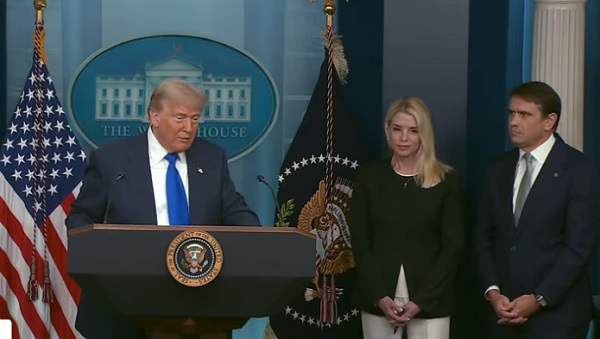
 Business1 day ago
Business1 day agoTrump on Canada tariff deadline: ‘We can do whatever we want’
-

 Business7 hours ago
Business7 hours agoCanada Caves: Carney ditches digital services tax after criticism from Trump
-

 Brownstone Institute2 days ago
Brownstone Institute2 days agoFDA Exposed: Hundreds of Drugs Approved without Proof They Work
-

 Crime7 hours ago
Crime7 hours agoSuspected ambush leaves two firefighters dead in Idaho
-

 Energy1 day ago
Energy1 day agoChina undermining American energy independence, report says

